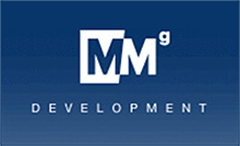1724 Kalorama Road
Adams Morgan
Washington, DC
Single-Family Development
Project Architect: Bonstra | Haresign Architects
Project Design: MMg
Completed: Q2 2017

Highlights
Previously known as The Trans-Century Building, a commercial property, MMg acquired it in August of 2015 for the purpose of converting it into a 45,000 SF, 45-unit apartment building. The original building located in the AdamsMorgan neighborhood on a lot measuring 8,214 SF, was built in 1928 and measuresapproximately 23,000 SF.
This project involves the development of a new 5-story (plus penthouse) 45-unit apartment building to include an underground garage.Additionally,the location features many means of transportation including Car2Go, bike rentals and access to other modes such as bus, Uber, Zipcar, metro, etc.
The recaptured space resulting from the reduced parking load will be allocated to living space, storage lockers and bike storage. Other amenities will include a common roof deck, an entertainment room on the roof level, lobby a laptop workstation with free Wi-Fi in the lobby of the building. Several units will feature balconies, patios and private roof decks.
After completing the design of the new 45-unit building, MMg received a generous offer for the property less than one year after purchasing it. The property changed hands in October of 2016.
Neighborhood
Adams Morgan is a culturally diverse neighborhood in Northwest Washington, D.C., centered at the intersection of 18th Street and Columbia Road. Adams Morgan is considered the center of Washington’s Hispanic immigrant community and is a major night life area with many bars and restaurants, particularly along 18th Street and Columbia Road. Much of the neighborhood is composed of 19th- and early 20th-century row houses and apartment buildings.
Along with its adjacent sister communities to the north and east, Mount Pleasant and Columbia Heights, Adams Morgan long has been a gateway community for immigrants. Since the 1960s, the predominant international presence in both communities has been Latino, with the majority of immigrants coming from El Salvador, Guatemala and other Central American countries. Since the early 1970s, like other areas of the nation, Adams Morgan had seen a growing influx of immigrants from Africa, Asia and the Caribbean, as well.
Adams Morgan also has become a thriving spot for night life, with a number of bars and clubs featuring live music. Over 90 establishments possess liquor licenses, putting it on level with other popular nightlife areas like Georgetown and Dupont Circle.
Another barometer of the enduring pull of Adams Morgan for immigrants is the linguistic and cultural diversity of its public schools. Many of the families served live beyond the boundaries established for routine student enrollment; however, Adams, Reed, and H.D. Cooke elementary schools all have international populations, with children from well over 30 nations in attendance. Latino and African-American children comprise the majority of students in the public schools, and virtually all are children of color.
The name Adams Morgan – once hyphenated – is derived from the names of two formerly segregated area elementary schools — the older, all-black Thomas P. Morgan Elementary School (now defunct) and the all-white John Quincy Adams Elementary School. Pursuant to the 1954 Bolling v. Sharpe Supreme Court ruling, District schools were desegregated in 1955. The Adams-Morgan Community Council, comprising both Adams and Morgan schools and the neighborhoods they served, was formed in 1958. The city drew boundaries of the neighborhood through four pre-existing neighborhoods – Washington Heights, Lanier Heights, Kalorama-Triangle Historic District and Meridian Hill – naming the resulting area after both schools.


